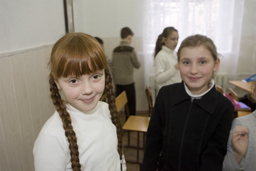The 2002 Jewish Community Study

 The Jewish community of Pittsburgh is younger, more stable, and includes more newcomers than previously assumed, according to the 2002 Pittsburgh Jewish Community Study completed by the United Jewish Federation of Pittsburgh.
The Jewish community of Pittsburgh is younger, more stable, and includes more newcomers than previously assumed, according to the 2002 Pittsburgh Jewish Community Study completed by the United Jewish Federation of Pittsburgh.
The "2002 Pittsburgh Jewish Community Study," found that 48 percent of the Jewish community of Pittsburgh is under the age of 40, and of those age 22 to 39, 40 percent have moved to the city in the past 10 years.
The 12- month study, completed by Ukeles Associates, Inc., funded by the UJF, UJF Foundation and the Jewish Healthcare Foundation, is the first measurement of the community since 1984 when the UJF last completed a population study.
In 2002, there are 54,000 people living in 20,900 Greater Pittsburgh Jewish households. In 1984, there were 47,700 people living in 19,000 Jewish households. This represents an increase of 14% in number of people living in Jewish households and 10% in number of households.
The number of Jewish people in Greater Pittsburgh has declined approximately 6% since 1984, but, in context, the Allegheny County population decreased 11.6% during a similar time period (1980-2000).
Perhaps one of the most revealing findings in the study is what Jack Ukeles, president of Ukeles Associates, Inc. calls "a tale of two Pittsburghs."
"There is good news for Pittsburgh. The study reveals that Squirrel Hill remains a very vibrant, stable and desirable neighborhood for the community," said Ukeles. "The greater Squirrel Hill section of Pittsburgh accounts for 47 percent of the entire Jewish population in greater Pittsburgh. This is a stable, third-generation community that is tightly knit and connected. The stability of Squirrel Hill, a geographic hub of the Jewish community located within the city limits, is unique in North America."
"However, there is an equally large number of Jewish people who are younger and more dispersed throughout the community, many of whom have moved from other cities and who are not connected to the community," Ukeles said.
Beyond greater Squirrel Hill, the study found the Jewish populations of the South Hills, comprising 14 percent, and Eastern Suburbs, 13 percent, making them the second and third largest areas where the Jewish community resides. This was followed by Fox Chapel/O'Hara Township and sections of the North Hills, nine percent; East End, defined as East Liberty, Highland Park and Stanton Heights, five percent; and the Western Suburbs, five percent.
The Pittsburgh Jewish community still has a significant elderly population with 18% over the age of 65, but that figure is considerable less than previously thought. This percent of people over 65 is essentially equal to Allegheny County's 17.8%, although Jewish communities typically have a higher percentage of elderly than the general population.
The study shows significant needs in the Greater Pittsburgh Jewish community among the Jewish poor and near poor; 59% of households with incomes under $25,000 report "fair" or "poor" health. The study also shows that 27% of the people over 65 live alone, and nearly half of them have no adult children in the community.
Regarding Jewish denomination, 41 percent of all Jewish respondents self-identified as Reform, 32 percent as Conservative, seven percent as Orthodox, 2% as Reconstructionist, and 14 percent as "no denomination, just Jewish."
The quantitative study was based on telephone interviews with 1,313 Jewish households conducted between November 8, 2001 and February 1, 2002. A Jewish household was defined as a residence where at least one adult considered himself/herself to be Jewish.
One of the purposes of the study is to enhance the community's ability to plan for the future by focusing on critical policy issues. The study was designed to explore six areas of major interest: Vulnerable Populations and Human Services, Jewish Education and Jewish Connections, Community Stability and Change, Relationship to Israel, Engagement of Young Adults, and Philanthropy.
Click here to view the full report.
This electronic report was made possible by a grant from the Alcoa Foundation.
